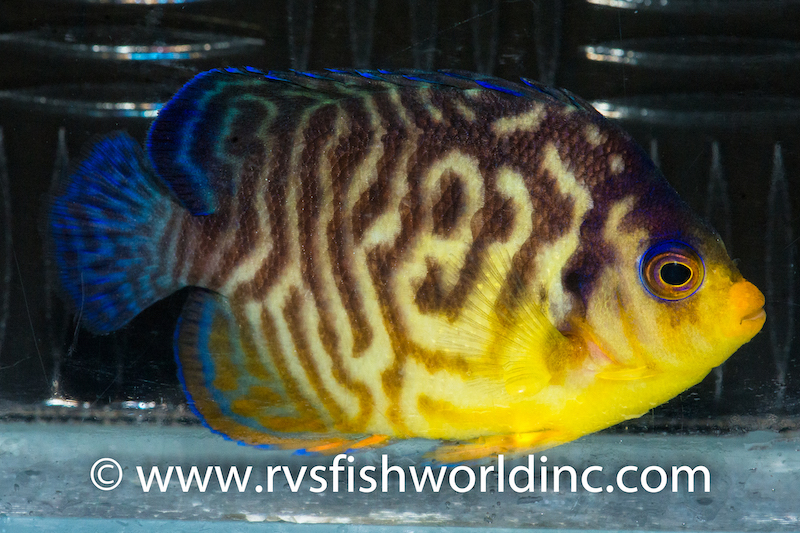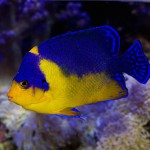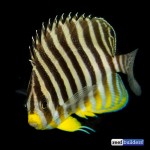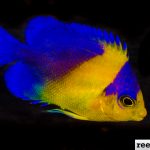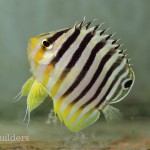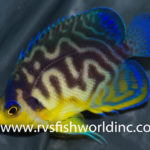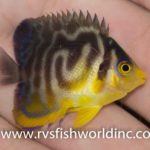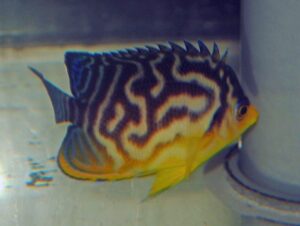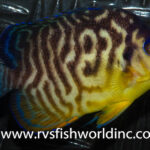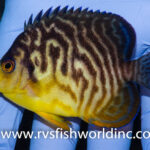The hybrid of multibar and venusta angelfish is the only one known from the Paracentropyge genus and it is also one of the rarest, and most highly sought after. On average, only one specimen is discovered in the Philippines roughly every two years but the specimens are by and large juvenile to adolescent in their size and development.
Teh two parent species of this very coveted hybrid are the purple masked angelfish, Paracentropyge venusta, and the multibar angelfish, Paracentropyge multifasciata. These two very recognizable small angelfish species share a higher profile, deeper body than Centropyge pygmy angelfish but their color and pattern have almost nothing in common, except for the yellow pelvic fins and ventral area.
This clash of color and pattern between these two Paracentropyge is what makes their hybrid so interesting and exciting since it creates an unpredictable psychedelic scribbled pattern that varies between specimens, and even opposite sides of the same fish. Alas, while we’ve seen enough examples of small specimens, due to their extreme scarcity the multibar-purple-mask is so rarely seen that we didn’t really know what the adult appearance looked like until now.
A new specimen of this awesome hybrid was just collected by RVS Fishworld and it is the largest, most mature example of this unique Paracentropyge that we’ve ever seen fresh from the wild. At almost four inches in total length, the treasure that RVS is showing off has a pattern that is closest to approaching fully developed.
The barring along the sides is extremely numerous and interestingly, very scribbled towards the front of the fish but starts to organize a little more neatly towards the posterior of the specimen. Curiously this general trend is visible on both sides of this specimen, as if the genetic expression is trying to organize itself, this could be just a coincidence but hopefully more future examples will help shed some light on the one and only known hybrid from this fascinating genus.


